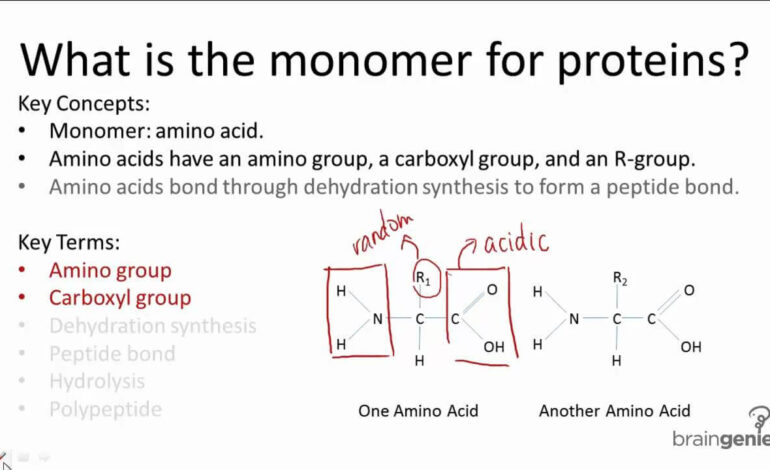
Revelation of the Monomers of Proteins: The Building Blocks of Life
Introduction
Proteins are the workhorses of the biological world, performing a wide range of essential functions within our bodies. To understand proteins, we must first delve deeper into their fundamental components, the monomers. In this article, we will take a journey into the interesting world of monomers of proteins, exploring their types, functions and importance.
What are monomers?
Monomers are the building blocks of larger molecules, and in the context of proteins, they are the individual units that come together to form these important biomolecules.
Amino Acids: Major Monomers
When it comes to protein, amino acids are the stars of the show. These organic compounds serve as the primary monomers that make up proteins. Amino acids are often compared to the alphabet of life, because they can be combined in different sequences to form an astonishing variety of proteins.
Amino Acid Diversity
Twenty Essential Players
In nature, there are twenty standard amino acids that serve as the basic building blocks of proteins. Each of these amino acids has a unique structure and specific properties, which contribute to the diverse functions of proteins in our bodies.
Essential vs Non-Essential Amino Acids
Of the twenty amino acids, some are considered essential, meaning our body cannot synthesize them and must obtain them from our diet. On the other hand, non-essential amino acids can be synthesized by our body.
Role of Amino Acids in Protein Structure
Peptide Bond: Glue of Proteins
Amino acids are linked via peptide bonds, forming long chains called polypeptides. These polypeptides then fold into specific three-dimensional structures, giving each protein its specific shape and function.
Primary, Secondary, Tertiary and Quaternary Structures
Proteins have four levels of structural organization:
Primary structure: Linear sequence of amino acids.
Secondary structure: Localized folding patterns, such as alpha-helices and beta-sheets.
Tertiary structure: The overall 3D arrangement of a single polypeptide chain.
Quaternary structure: A structure formed by the coming together of several polypeptide chains.
Functions of Proteins
Enzymes: Catalysts of Life
Proteins play diverse roles in our body. For example, enzymes are proteins that act as catalysts and speed up chemical reactions. Without enzymes, the reactions required in our bodies to maintain life would occur much more slowly.
Structural Proteins
Other proteins, such as collagen, provide structural support to tissues and organs. For example, collagen is an important component of our skin, bones, and tendons.
Protein Synthesis: Formation of Proteins from Monomers
Transcription and Translation
The process of protein synthesis involves two main steps: transcription and translation. During transcription, a copy of the genetic code is made from DNA into messenger RNA (mRNA). In the subsequent translation step, the mRNA code is read by ribosomes, and the amino acids are assembled into a polypeptide chain.
Importance of Understanding Protein Monomers
Understanding protein monomers is not only fascinating but also important for various fields including medicine, biochemistry, and biotechnology. Researchers use this knowledge to design drugs, study diseases, and engineer new proteins for various applications.
conclusion
In short, proteins are the workhorses of life, and their functionality arises from the complex arrangement of their monomers, amino acids. These small building blocks come together like puzzle pieces, forming a vast array of proteins with diverse functions. From enzymes that power biochemical reactions to structural proteins that provide stability, proteins are indispensable. So, the next time you taste a meal or flex a muscle, remember that protein monomers are what make it all possible.





